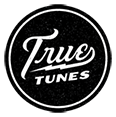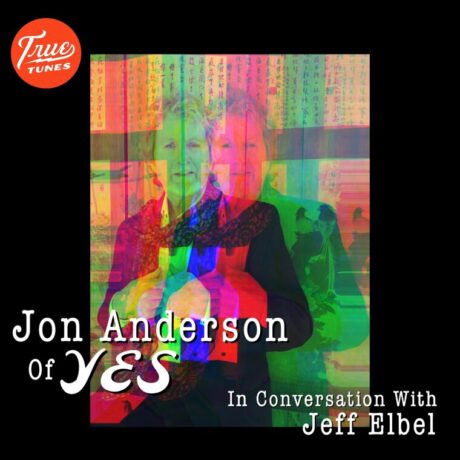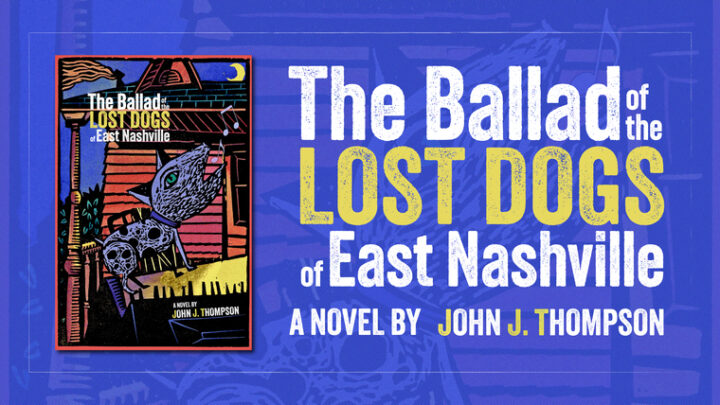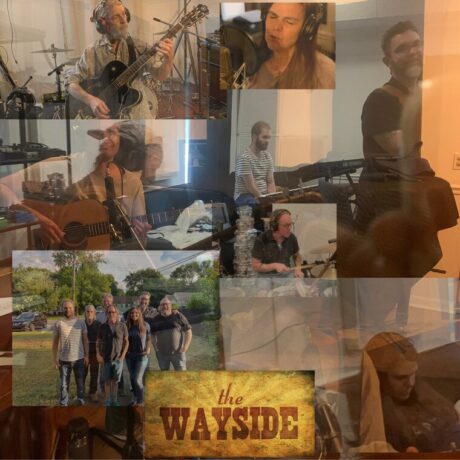Jon Anderson of YES (in conversation w Jeff Elbel)
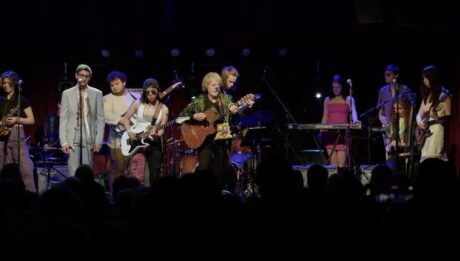
The meticulous progressive rock sound of Yes has challenged the norms of popular music and fascinated fans since the arrival of the band’s 1969 self-titled debut. The English group’s fifth album, 1972’s Close to the Edge, is considered a high-water mark. It features virtuosic, classically inspired instrumental performances, coupled with irresistible melodies and Jon Anderson’s mystical lyricism. Yes’ lineup has shifted over its 54 years, but its best-known material, including “Roundabout” and “Owner of a Lonely Heart,” has been sung by Anderson. At 78 this month, the singer and songwriter maintains a youthful spirit and continues to carry the torch for Yes music while creating his own new work.
This summer, Anderson underscored the multigenerational appeal of Yes by touring with more than two dozen gifted students from School of Rock founder Paul Green’s Rock Academy. Anderson first encountered School of Rock participants in 2005, after meeting Green at a Yes concert in Philadelphia. True Tunes correspondent Jeff Elbel spoke to Anderson by phone during the tour.
Jeff Elbel: You’ve played dates like this before, working with some of Paul Green’s very talented students. You must have found it rewarding enough to repeat.
Jon Anderson: 20 years ago, I was doing a show with Yes in Philadelphia at the Spectrum. After the show, I walked back and there were these kids wearing School of Rock t-shirts. I thought, “Hello, hello! What’s this?” I said hi to them, and then Paul Green popped up. We started chatting and he said, “Would you be interested to come to Philadelphia and work with the kids?” I said, “Not really, I’m on tour.” He sent me a cassette two weeks later of the kids playing “Heart of the Sunrise,” which is not an easy piece of music. I called Paul and said, “I didn’t realize how amazing these kids are.” We got together and started rehearsing with them, talking about stage presence and things like that. Then we did some shows that year.
JE: How many students do you have with you on this run? I heard 25.
JA: Yeah. It looks like there’s more. I don’t know how these kids do it, but they’re so brilliant. They’re all great musicians and they’re very talented and very joyful and very grateful and thankful. That’s all you need when you’re working with young people.
JE: What is the age range?
JA: I think it’s 14 to 18.
JE: As a bandleader and teacher, it might be obvious what inspiration the students take from you. What inspiration do you take from them?
JA: It’s amazing how great I feel when we do this. We’re playing the Close to the Edge album on this tour and stretching them a little bit, and they’re so good at it. People are really going to be blown away. They’re really intense when they rehearse. When I’m with them, I feel like I’m a young kid as well — until we take a selfie and I say, “Who’s that old guy?” And it’s me! [laughs]
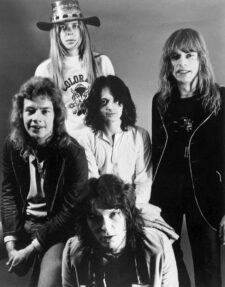
JE: Does doing this rekindle memories of what it was like to play the music with Yes in younger days?
JA: Probably so, sure. When we started off as Yes, we liked The Fifth Dimension, so we did a couple of Jimmy Webb songs. We did a very long version of “In the Midnight Hour.” The first show we did, I think we played that for an hour because we didn’t have that many songs yet. That’s when me and [Yes bassist] Chris [Squire] started writing that first album and second album. Then we got [Yes guitarist] Steve [Howe] in the band and I started writing with him. From then on it was growing and growing.
JE: I think of you as an artist focused on new adventures and creating in the moment. On this tour, you’re celebrating the 50th anniversary of an early landmark. How rewarding is it to take a backward glance to appreciate something like that?
JA: It’s just something you can’t believe when you look back and think it’s 50 years ago that we actually did Close to the Edge. It still sounds great to me. The audiences love it, and the kids love it, which is fantastic.
JE: In addition to Yes songs and solo songs, these shows are taking some twists that might surprise a lot of your fans.
JA: I said to the kids, let’s do Led Zeppelin’s “Kashmir,” and then we can go into something like “Heart of the Sunrise” or “Long Distance Runaround.” We’ll do a Lenny Kravitz song that I love, “Fly Away,” then go into another Yes song. We have a guy in the show who does a great version of Eminem’s hit “Lose Yourself.” I feel like I’m in the band for that one; I play guitar and just watch this guy sing it. It’s quite extraordinary. That goes straight into [1981 Jon and Vangelis song] “State of Independence.” You’re in the same key and same tempo and you just slide in. You call it “mashing-up.”
JE: That sounds fun, and it’s wonderful that Close to the Edge still brings you joy.
JA: I still feel the connection. I wrote it with Steve and Chris and the band at that time. The lyrics sort of ring out better for now, as I say, 50 years later. I’m singing it listening to the lyric and saying, “This is not bad.”
JE: It was prescient. II feel like the themes do still resonate strongly. An interesting thing about Yes music is that the lyrics don’t offer everything on the surface, but if you spend time with them, you see underneath and begin to understand the careful thinking involved. The song Close to the Edge seems to be about finding harmony within oneself and the song “And You and I” seems to be about finding harmony between two people. Am I on the right track?
JA: I think so. It’s definitely about finding harmony within yourself. It was always about being close to the edge of realization, but I never wanted to use that word. In my mind, it was the realization of why you’re here, why you live. “I get up, I get down.” Sometimes I’m very up and sometimes I’m very down about life. It’s the same with everybody. “And You and I” to me is more to do with the fact that you and I are all the same in a strange way. You and I, we, are everyone in a way. That was the statement in the of back of my mind.
JE: I have the three LP set from the Progeny box, with recordings from the first Close to the Edge tour in 1972. Before you play “And You and I,” you talk about originally referring to the song during writing as “The Protest Song.” You talk about the difficulty in sending a message from everyday people to the people in charge, and you mention dreaming a better future into existence for the children of that day. Those infants would be turning 50 this year. I wondered whether your dreams and wishes were any different today. Have you seen any of those 50-year-old dreams realized, despite obvious challenges? Do you maintain your optimism?
JA: Well, I think that the more I let go of the frustration of the world that we see on CNN every five minutes, the better. You can’t rely on that. The nature of the world is more important to me. I’ve just finished a long-form piece of music over the past year that is also about how we’re all connected. Our collective mission in life is to be the gardeners of the earth, to be the true coordination of life and love and peace–everything the Beatles said. I was just listening to John Lennon’s “Imagine.” What an incredible lyric. It works now more than ever. So, songs that I was writing 20 or 30 years ago still work because we weren’t singing about “she loves me, I love her, let’s party on down.”
JE: What do you call that new long-form piece of music?
JA: I made an album years ago called Olias of Sunhillow, which is the story of how music came to the planet in a sort of hidden way. The music was created by myself. I did a new piece of music by myself a few years ago, and actually put it on my Facebook so people can listen to the music. And when I got off the tour that I was on at that time, I started listening to the music and started singing along with it. By the middle of last year, I started adding orchestral sounds and adding things. It’s like painting a gigantic mural over a period of time. It’s called Zamran, Son of Olias.
Zamran has come to the planet that has become Earth to create the ley lines that surround the Earth. You can Google ley lines. You can actually Google Zamran like I did two weeks ago, because I’ve been calling the music Zamran for nearly eight years and I decided to study what it means. It’s pretty interesting. Now, ley lines are crystal streams of energy that surround the planet and give it energy that makes it spin and makes it glide around the Sun. They also have special moments when all the streams come together above ground, and you have a sacred site. As far as I know, there are 13 major sacred sites ranging from Machu Picchu, Ayers Rock, Mount Fuji and so on. Sacred sites are everywhere.
JE: It will be interesting to read about the concepts behind the story. That reminds me of how I enjoyed Close to the Edge simply as music for a long time. Eventually, I dug deeper and learned where the themes connect to the Herman Hesse novel Siddhartha. I learned that the “Total Mass Retain” section of the song Close to the Edge intersected with the idea from Siddhartha of life as an ongoing journey, and the idea that enlightenment can only come through the sum of all experience. It can’t be sought directly or provoked.
JA: True.
JE: “Siberian Khatru” is the third song on Close to the Edge, and it also resonates today. It uses the metaphor of Siberia as a remote and even hostile or alien place but describes how even there, we find unifying experiences.
JA: Oh yeah. Even Siberia goes through the same energies that we’re all going through. We’re not unsimilar. We are collectively everyone. That’s one of the main themes of Zamran, since the beginning of the project. It opens up about the connection we have with the sun and how everything is from under the ground.
I’m a big fan of Michio Kaku. He’s a physicist who speaks the truth about where we are now, where we’ve been, and where we’re really going. He’s quite a phenomenal speaker.
JE: Were John McLaughlin and Mahavishnu Orchestra a musical influence on “Siberian Khatru?”
JA: Yeah. We were actually on tour in America with the Kinks at the time, and there’s a funny story. We did our first show with the Kinks at a theater in north New York. I’ve gotta remember the name. We were just going to go on and do our show, and Ray Davies said, “50 minutes.” I said, “Oh yeah,” so we told him we’d do about 50 minutes. So, we went on stage and started playing. With about four minutes left to go, I said to Chris, “Let’s do ‘Yours is No Disgrace,’” which is at least eight minutes long. [laughs] So we started playing it and all of a sudden somebody pulled the plug on all our equipment, and there’s Ray Davies standing with the plug in his hand saying, “I told you f—ing 50 minutes!” So, we toured with them about half a dozen more shows. One of the shows was at New York State University and we heard that Mahavishnu were going to open up the show. So, we got there early to watch the soundcheck. It was mind-blowing. It was like, “God is still here,” musically speaking. That really inspired everything that I did in that period.
JE: I met you very briefly in 2018 when you were in Chicago with [90125 guitarist and songwriter] Trevor Rabin and [Yes keyboardist] Rick Wakeman. I mentioned my age and the fact that your work had been a constant and a source of positivity since I became aware of music. You smiled and said, “More to come.” That was our complete exchange, and it was a perfect reply. So, I’m glad to hear about Zamran: Son of Olias and other new music. I wondered about 1000 Hands: Chapter Two. What else is happening?
JA: My producer’s working with people in London. He went to work with a couple of Irish bands as well as Jacob Collier, my favorite young musician who I love so much. When I started doing Zamran, I started getting to that place after a couple of months of playing and creating music where I thought, “Where am I going with this?” Then I heard Jacob Collier and connected with his music. I started watching his videos and thinking, “My God!” I remember there was a quote underneath one of his videos that said, “Welcome back, Mozart.” I thought, “I’ve gotta work with this guy.” So, maybe that’s going to happen, fingers crossed.
JE: I gather that your plans for 1000 Hands in three parts were upended by COVID lockdown.
JA: Yeah. I had a few more songs from way back around 20 years ago that we never used. Now, we’re redesigning them. I also found some music from 30 years ago that I liked. The producer Michael Franklin is just getting on with it. It takes time.
JE: Are you playing a few 1000 Hands: Chapter One songs on this tour?
JA: No. The key is what to do, when to do, and how to do it. We rehearsed “Where Does Music Come From” a couple of times. It didn’t bounce as much as it should do, so we decided to leave that for now and just get on with the Close to the Edge album and the other things we’re doing this tour. I’m trying to think of them all now. I’ll find out at the show tonight! [laughs]
JE: Next year holds another big milestone for Yes. It’s the 40th anniversary of 90125, which many people see as the reinvention of the Yes sound. It revitalized interest in Yes music, which has continued ever since. Will you celebrate that milestone?
JA: Yeah. There’s always a next step. I’m thinking of doing something a little bit more radical next year with a group of musicians who call themselves The Band Geeks. They sound exactly like Yes. We do “Leave It” on this tour, by the way. The girls sing it like crazy and it’s fantastic. And “Owner [of a Lonely Heart],” of course.
JE: Was there music in development by you and Trevor and Rick as “Yes featuring Anderson, Rabin and Wakeman?”
JA: Yeah. It never fulfilled itself at that time. I wrote some music with Trevor and a couple of things with Rick. It wasn’t meant to be. I get on with life.
JE: You and your fans lost a few musical brothers recently in Chris Squire, [Yes drummer] Alan White, and Vangelis. Do you salute your time together during the show?
JA: I mentioned earlier that we do “State of Independence.” They’re always with us in spirit. When Vangelis passed away [in May], I was laughing all day. My wife thought I’d gone crazy. I said, “No, no. We used to have so much fun together.” I’m thinking of all the fun things we did, and he’s laughing and I’m laughing. Of course, Alan was my best man at my wedding 25 years ago. We were always buddies. We come from the north of England. We were very, very close and we really loved him very much. That’s what happens in life, you know? What happens next is something I’m still writing about, which is the afterlife. It’s very important to know there is more to life than this life. There’s the discovery of the next world, and so on.
JE: As you’ve been telling me today, you’re known for writing impressionistic lyrics with a mystical sensibility, but I recall reading that inspirations for some of your lyrics were very relatable and down to earth. I recall reading that “Roundabout” was inspired by the view from the window on the road toward home from a tour. Is that right?
JA: Yeah, from Aberdeen to Glasgow there were maybe 20 or so roundabouts – every five miles, another roundabout. We just laughed about it. Me and Steve were in the back of the van and started singing. We were in a very intense valley, and the mountains were coming up to the right and left of the road. You couldn’t see the top of the mountains because the clouds were so low. They looked like they were coming out of the sky. I remember writing and sketching it down in rehearsal.
JE: Is it generally better to leave things open to the listener’s interpretation, or is it sometimes worthwhile to share a relatable inspiration like this? Maybe that allows you to create a common bond.
JA: In some ways. At one point, I thought of writing a book about the lyrics, but then I thought, “Maybe not.” Don’t explain anything. What’s the point? [laughs]
JE: Is there any everyday inspiration within Close to the Edge that might surprise people, or is it more wholly drawn from the Hermann Hesse novel Siddhartha?
JA: It was Siddhartha and Journey to the East in that period of time. When I think about the lyrics, “A seasoned witch could call you from the depths of your disgrace,” it meant you’re always to be looked after no matter where you go. There is always that connection with the divine. It’s a broad-stroke concept.
JE: A few moments ago, you said the recurring line, “I get up, I get down” meant that some days you’re very up, and some days you’re down. I originally thought it was a statement of action. “I get up and I get down to business.”
JA: Like, “I get on down.” Sure, but the idea really is just to find that balance. We have heartache everywhere on the news and war everywhere – not just physical war but mental war going on with the committee for the 6th of January. It’s very important. I’m American, so I want us to let go and grow.
JE: How long have you been a citizen?
JA: I became a citizen about 12 years ago.
JE: There’s a story that when Yes was recording the song “Close to the Edge,” there was a piece of tape with an important section that got thrown into the garbage. When you realized it, everybody had to rush out and look through the bins.
JA: In the rain.
JE: In the rain, no less!
JA: The cleaning lady had been in while we were taping things together, and there was a piece of tape missing. We had to go out in the rain looking for it in the dustbin. We found it!
JE: Was that a big moment of panic?
JA: Yes! You can spend a whole day mixing three minutes of a piece. You get that mix and you’ve got to make sure that it actually works with the next piece, and so on. In those early days, things were different.
JE: I can imagine there’d be plenty of things that you might forget after 50 years, but something like that would be an indelible memory.
JA: Yeah, yeah, yeah.
JE: Yes music is famous for featuring virtuoso playing, but it seems that the strength of Close to the Edge is ensemble playing. Those virtuoso musicians were really listening to each other.
JA: That’s exactly right. It’s as though we all met to do that, and that alone, and that was it. And then [drummer] Bill [Bruford] left. How dare you, Bill? [laughs] He left the band! He obviously thought there was something wrong with us.
JE: The thing I thought was bizarre about that story was that Bill left the band because making Close to the Edge was very difficult, but then he went directly to King Crimson. That’s not a band with a reputation for being a walk in the park.
JA: Yeah. I could have killed him. [laughs]
JE: I imagine you had a chance to patch up.
JA: Yes. I went to his wedding about six weeks later. I went to see [King Crimson] play, and they had a guy in the band called Jamie Muir. He was a wild man, jumping around, banging microphones on the stage floor, against gongs or pieces of metal to make rhythmic music to Bill’s very tight drum kit at the front of the stage. I met Jamie, and I said, “How you do this?” And he wrote down the name of a book. It changed my life. It won’t pop into my head.
JE: Was it a philosophical book, or a musical book?
JA: It was a spiritual book. [Jon calls back moments after our interview with the title: Autobiography of a Yogi by Paramahansa Yogananda.]
JE: The back-to-back albums Fragile and Close to the Edge broke ground and are probably Yes’ best-known records aside from 90125. Do you consider those early records to be companions, or does Close to the Edge represent a distinct progression?
JA: I think Close to the Edge was definitely a progression.
JE: Other seasoned singers like Roger Daltrey have talked about the perils of protecting a mature singing voice in rock music. Do you have a specific regimen to maintain your vocal range?
JA: No, I just pray every day that it’s going to be okay.
JE: So far so good, then! “More to come.”
JA: Yeah!
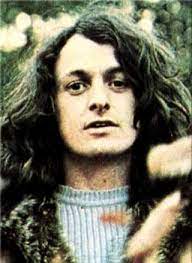
This conversation was originally quoted for a story in the Chicago Sun-Times.
